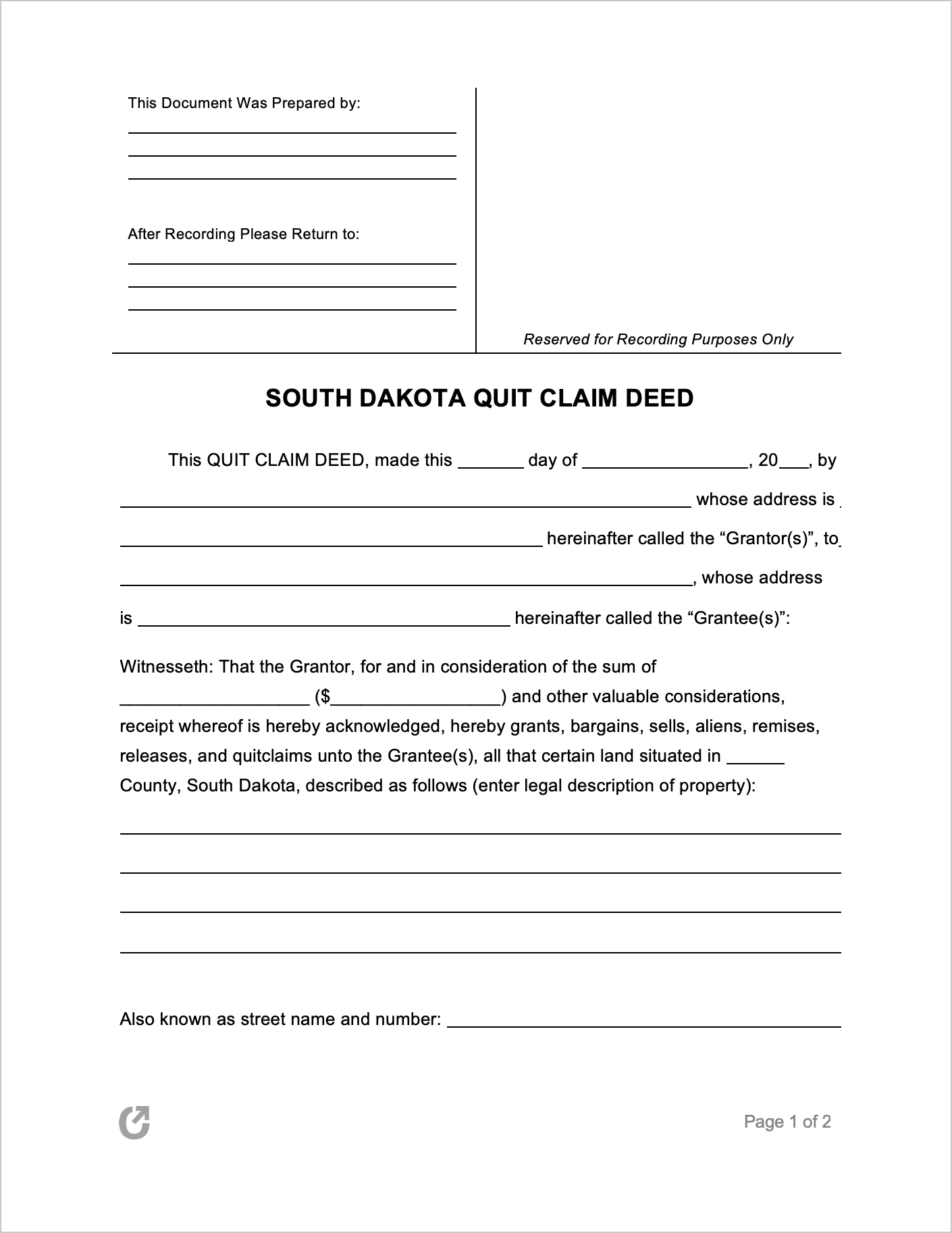South Dakota Quit Claim Deed Form
The South Dakota Quit Claim Deed (mistakenly called a “Quick Claim Deed”) is a type of deed used for transferring property interest from one party to another. The form is basic and does not include protections found in comparable deeds, with the benefit being that it is quick and easy to complete.
Overall, the form can be used to:
- Gift a property to family/friends,
- Fix errors in a property’s title,
- Put property into a business entity, or
- Relinquish property to an ex after a divorce.
Download: Adobe PDF, MS Word (.docx)
Laws: § 43-25-7
Requirements
Certificate of Real Estate Value (§ 7-9-7): Prior to filing, the deed’s preparer (most likely the Grantor) will need to complete Form SDCL (Certificate of Real Estate Value).pdf. Once complete, it should be filed alongside the quit claim deed.
Formatting (§ 43-28-23): Specific formatting standards outlined by state law must be upheld, as follows:
- Each sheet must be a maximum of eight and a half inches (8.5″) by fourteen inches (14″), and a minimum of eight and a half (8.5″) inches by eleven inches (11″),
- The form must be free of any attachments that obscure information or printed material on it,
- The print must be at least 10-point type,
- The text must be in black ink,
- The paper must be white and be a minimum of twenty (20) pounds,
- A blank space of at least three inches (3″) must be kept on the top of the first page (* See the section below for further information),
- On the first page, all margins except the top one should be at least one inch (1″), and
- The entirety of the document should be legible enough to be reproduced for recording.
Marital status (§ 43-28-19): Recitals must be made at the Register of Deeds regarding one (1) of the following three (3) pieces of information:
- The marital status of both the Grantor and Grantee,
- The homestead status of the property, or
- The identity of parties named in the Deed in the chain of title.
Grantee Mailing Address (§ 43-28-21): The Grantee must provide their mailing address to the Register of Deeds at the time of recording.
Signing Requirements (§ 43-25-26): Must be signed by the Grantor and a subscribing witness or a Notary Public.
How to File
The deed must be recorded at the Register of Deeds upon being completed and signed. The Register must be in the same county in which the property is located.
The Importance of Recording: South Dakota abides by a “race-notice recording statute.” State law (§ 43-28-15), establishes that “constructive notice” must be given by way of recording the deed. This explains the “notice” part of a “race-notice.” In regards to the “race” part, § 43-28-17 states that priority will be given to the “conveyance [that] is first duly recorded.”
To explain this in easy-to-understand terms, recording a deed provides what is called “constructive notice” to other parties who may wish to purchase the same property. It is a legal requirement to provide such notice by making a record of the deed at the Register of Deeds.
If one party does not provide notice and another party proceeds to purchase and record a conveyance for the same property, the party who records their conveyance first will obtain the property title because state law prioritizes recorded conveyances. In effect, the party who did not record their conveyance will lose any rights to the property.
